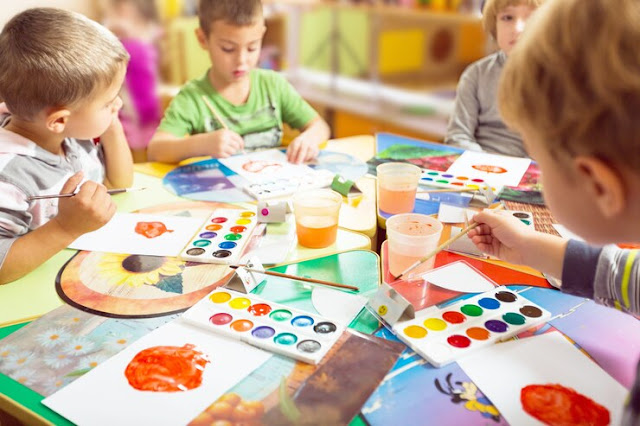So, why is art important in early childhood development? Picture this: a young mind, brimming with curiosity and bursting with ideas. Art provides a canvas for these budding imaginations to flourish. From painting colorful masterpieces to sculpting intricate shapes out of clay, children learn to think outside the box and explore the boundless possibilities of their creativity.
TD
But it's not just about honing artistic skills. Art also plays a pivotal role in children's emotional development. Through art, they learn to express their feelings and emotions in a safe and constructive manner. Whether it's painting a picture that reflects their joy or sculpting a piece that captures their sadness, art empowers children to embrace and understand their emotions on a deeper level.
For insights on how parents and teachers can respond to a child's artwork to nurture creativity and self-esteem, check out our blog post on How Should Parents and Teachers Respond to a Child's Artwork? Nurturing Creativity.
And let's not forget about the social aspect of art. As
children engage in collaborative art projects, they learn valuable lessons in
teamwork, communication, and cooperation. Whether they're brainstorming ideas
with their peers or sharing materials and resources, art fosters a sense of
camaraderie and mutual respect among children.
Now, you might be wondering, what exactly is the definition of art in early childhood? Well, it's not just about creating aesthetically pleasing works—it's about nurturing a child's innate creativity and imagination. Art in early childhood education encompasses a wide range of activities, from drawing and painting to collage-making and storytelling. It's about encouraging children to explore, experiment, and discover the world around them through the lens of art.
But why is art so important in education, you ask? Simply put, art is a catalyst for learning.It stimulates critical thinking, problem-solving, and decision-making skills—all of which are essential for academic success. Moreover, art fosters a love of learning and instills in children a lifelong appreciation for creativity and self-expression.
In the realm of education, art serves as a bridge between
imagination and reality. It allows children to transcend the confines of
traditional learning methods and tap into their boundless potential. The scope
of art education extends far beyond the confines of the classroom, encompassing
a wide range of disciplines and mediums.
So, what's the conclusion of art in education? Well, it's quite simple: art enriches the lives of children in ways that are both profound and everlasting. By embracing art as an integral part of education, we empower children to unleash their creativity, express themselves authentically, and navigate the complexities of the world with confidence and grace.
In essence, the aim and objectives of art in education are to cultivate well-rounded individuals who are not only academically proficient but also emotionally intelligent, socially adept, and creatively inspired. So, let's join hands and champion the cause of art in education, for the betterment of our children and the future generations to come. Together, we can make a difference—one brushstroke at a time!
TD TD
Art education is not just about creating artists; it's about
nurturing the whole child. Through art, children develop a range of skills and
competencies that will serve them well throughout their lives. By providing
them with opportunities to explore their creativity, express their emotions,
and collaborate with others, we can help them become confident, well-rounded
individuals who are ready to take on the challenges of the 21st century. 
As educators and parents, it's our responsibility to ensure that art remains an integral part of every child's education. Whether it's through dedicated art classes, integrated arts curriculum, or extracurricular activities, we must provide children with the tools and resources they need to thrive creatively. By doing so, we not only enrich their lives but also contribute to the cultural and artistic vitality of our society as a whole.
In conclusion, art is not just a subject; it's a way of life. By embracing art as an essential component of education, we can empower children to discover their unique talents, cultivate their creativity, and unleash their full potential. So let's celebrate the power of art and ensure that every child has the opportunity to experience its transformative effects. Together, we can create a brighter, more vibrant future for generations to come.
TDTD
TD TD

Comments
Post a Comment